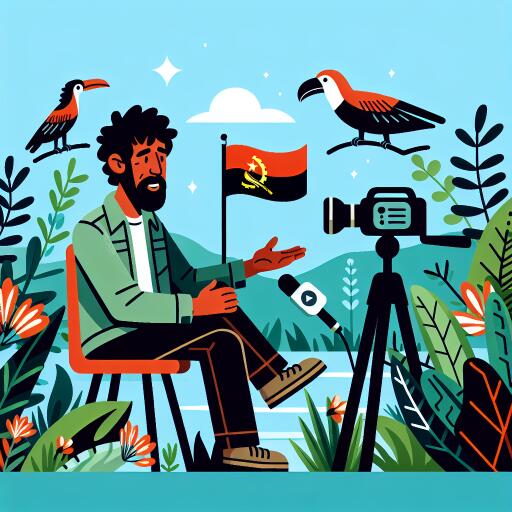
All Conservation is Local: Interview with Angolan Conservationist Kerllen Costa
In the majestic setting of Mount Moco, Angola’s towering peak, the essence of conservation takes on a unique form, blending tradition with modern ecological practices. Kerllen Costa has emerged as a pivotal figure in this landscape, fusing his passion for nature with a deep respect for local traditions. Starting his journey in Angola with a voluntary stint on a sea turtle conservation project, Costa’s path led him to pursue environmental studies in South Africa, grounding him in both scientific knowledge and a profound appreciation for ancient wisdom.
Costa’s work with the Kissama Foundation in the Huambo Highlands, a biodiversity hotspot, has become a testament to a philosophy that merges ecological preservation with anthropological insight. At the heart of Costa’s approach is a conviction that the solutions to ecological preservation lie within the communities themselves, extended through centuries of lived experience and symbiosis with their environment.
Embracing Indigenous Knowledge
During our conversation at the foundation’s nursery, nestled at the base of Mount Moco, Costa emphasized the critical role local communities play in conservation efforts. “We often overlook the intricate ecological knowledge indigenous communities possess,” Costa remarked. He advocates for the recognition of these age-old conservation methods by the government, suggesting that formal endorsement could bolster both ecological preservation and community empowerment without imposing disruptive external systems.
This approach has particular relevance at Mount Moco, where Costa’s team leans heavily on local wisdom. From identifying tree species that enhance biodiversity to employing traditional agricultural techniques, the community’s insights are integral to the project’s success. “Our role is not to teach but to learn and facilitate, enabling the environment to heal and thrive through practices honed over thousands of years,” he explained.
Creating Sustainable Alternatives
Despite facing challenges with early initiatives like the introduction of ecological stoves, which failed to gain traction, the project has seen incremental success. By focusing on sustainable wood harvesting and improving agricultural methods, among other strategies, Costa’s efforts are gradually fostering a more conservation-minded ethos within the community. Initiatives in coffee and honey production have not only enriched local livelihoods but also reinforced the value of preserving their natural heritage.
Community engagement, according to Costa, is a delicate and time-consuming process, requiring patience and a deep respect for local customs. “It took almost four years for the community to visibly see and appreciate the benefits,” Costa shared, emphasizing the importance of demonstrating tangible improvements to locals’ lives to gain their support for conservation efforts.
Looking Ahead
The ultimate ambition for Mount Moco is to secure its status as a protected area, a considerable milestone given the lack of new conservation designations in Angola since its independence in 1975. Costa remains optimistic but cautious, aware of the unpredictable pace of governmental processes. In the meantime, the focus remains on enriching community practices with sustainable advancements and government-recognized conservation measures. “Our hope is to equip the local population with the knowledge and tools to manage their resources effectively, ideally before official conservation status is granted,” Costa explained.
This approach, Costa believes, can inspire a broader shift in conservation paradigms. By valuing traditional ecological knowledge and community-led practices, it’s possible to protect and restore natural habitats within and beyond Angola’s borders. Kerllen Costa’s work at Mount Moco serves as a vibrant example of how blending ancient wisdom with contemporary conservation efforts can create a sustainable future for ecosystems and communities alike.
As the conversation concluded, the sounds of birdlife returning to the rejuvenated forests of Mount Moco stood as a testament to the project’s success. Under Costa’s guidance and the community’s stewardship, a landscape is being transformed, illustrating the power and potential of localized conservation efforts harmonized with the rhythm of tradition and the pulse of modern ecological science.





Leave a Reply